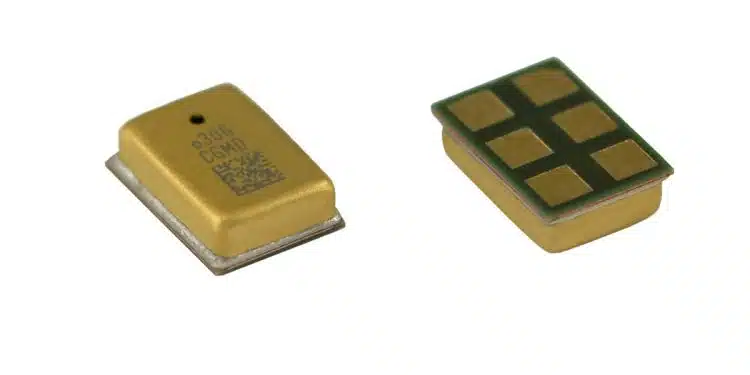Knowles releases high-performance digital voice vibration sensor for high-fidelity voice pick-up in True Wireless Stereo (TWS). Low power, high-performance specialized vibration sensor filters background noise to create reliable, high-quality voice calling in noisy environments.
Knowles Corporation (NYSE: KN), a market leader and global provider of advanced micro-acoustic microphones and speakers, audio solutions, and high-performance capacitors and RF products, releases the first-of-its-kind Digital Voice Vibration Sensor, V2S200D. Working in conjunction with microphones, V2S200D, a high bandwidth, low-power specialized vibration sensor, improves voice call quality in noisy environments by picking up the speaker’s voice and rejecting ambient sounds.
More than ever, consumers use audio devices, such as True Wireless Stereo (TWS) earbuds, for voice communication on the move, often in public places. Distracting noises common in restaurants, airports, and public transportation, for example, present challenges for achieving high-quality communication with traditional noise suppression techniques. High winds and traffic noise can also severely degrade voice call clarity in outdoor environments.
V2S200D is designed to help solve these challenges and selectively pick up the speaker’s voice while suppressing all other sounds. Blending low-band voice signals from V2S200D with the high-band voice signals using today’s TWS microphones enables a consistent, reliable, and frustration-free voice call experience in such environments. In addition to enhancing voice call quality, this sensor enables other use cases like voice activity detection, imposter rejection, and personalization.
With its small size, high signal-to-noise ratio (SNR), and low power, V2S200D offers an ideal solution to OEMs/ODMs looking to enhance the user experience of their products while working with significant Industrial Design (ID) and battery life constraints. In addition, it emulates a digital mic with Pulse Density Modulation (PDM) interface, which makes hardware integration and software development hassle-free.
“Frictionless communication from anywhere using Bluetooth headsets has become a basic expectation from consumers. We are more on-the-go than ever, and the new ‘work-from-anywhere’ culture means dialing into conference calls from cafes, trains, and lounges,” said Saket Thukral, Sr. Director of Product Line Management for microphones at Knowles. “We are excited to offer our customers an easy-to-use, high-performance solution to meet this expectation and help them delight consumers.”
“Bone conduction sensors are fast becoming an essential feature in TWS designs to improve voice pick-up in noisy environments. Until now, solutions in the market have tended to deliver less-than-ideal performance or have been challenging to integrate due to their size, robustness, high power consumption, or some other significant trade-off. I had a chance to experience the new Knowles V2S200D sensor at CES 2023. The unique solution provides remarkable performance, with low power, in a tiny package — the sweet spot for many applications in today’s market,” said Peter Cooney, Founder and Research Director of SAR Insight.
V2S200D is sampling with lead customers and is expected to be in mass production later this year.
Features
- 64.5dB Signal-to-Noise Ratio (SNR) in a small footprint
- High SNR & B/W for clear voice pick-up in loud/windy conditions
- Low power consumption for always-on usage
- 50dB acoustic isolation in a noisy environment (bars, airports, windy outdoor spaces)
- Ease of integration from PDM interface; Stereo mode supported
Applications
- Earphones
- Wearables
- Self-Speech Detection
- Wind Noise Reduction
- Imposter Rejection
































